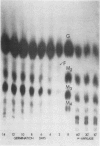Abstract
Time-sequence analyses of carbohydrate breakdown in germinating rice seeds shows that a rapid breakdown of starch reserve in endosperm starts after about 4 days of germination. Although the major soluble carbohydrate in the dry seed is sucrose, a marked increase in the production of glucose and maltooligosaccharides accompanies the breakdown of starch. Maltotriose was found to constitute the greatest portion of the oligosaccharides throughout the germination stage. α-Amylase activities were found to parallel the pattern of starch breakdown. Assays for phosphorylase activity showed that this enzyme may account for much smaller amounts of starch breakdown per grain, as compared to the amounts hydrolyzed by α-amylase. There was a transient decline in the content of sucrose in the initial 4 days of seed germination, followed by the gradual increase in later germination stages. During the entire germination stage, sucrose synthetase activity was not detected in the endosperm, although appreciable enzyme activity was present in the growing shoot tissues as well as in the frozen rice seeds harvested at the mid-milky stage. We propose the predominant formation of glucose from starch reserves in the endosperm by the action of α-amylase and accompanying hydrolytic enzyme(s) and that this sugar is eventually mobilized to the growing tissues, shoots or roots.
Full text
PDF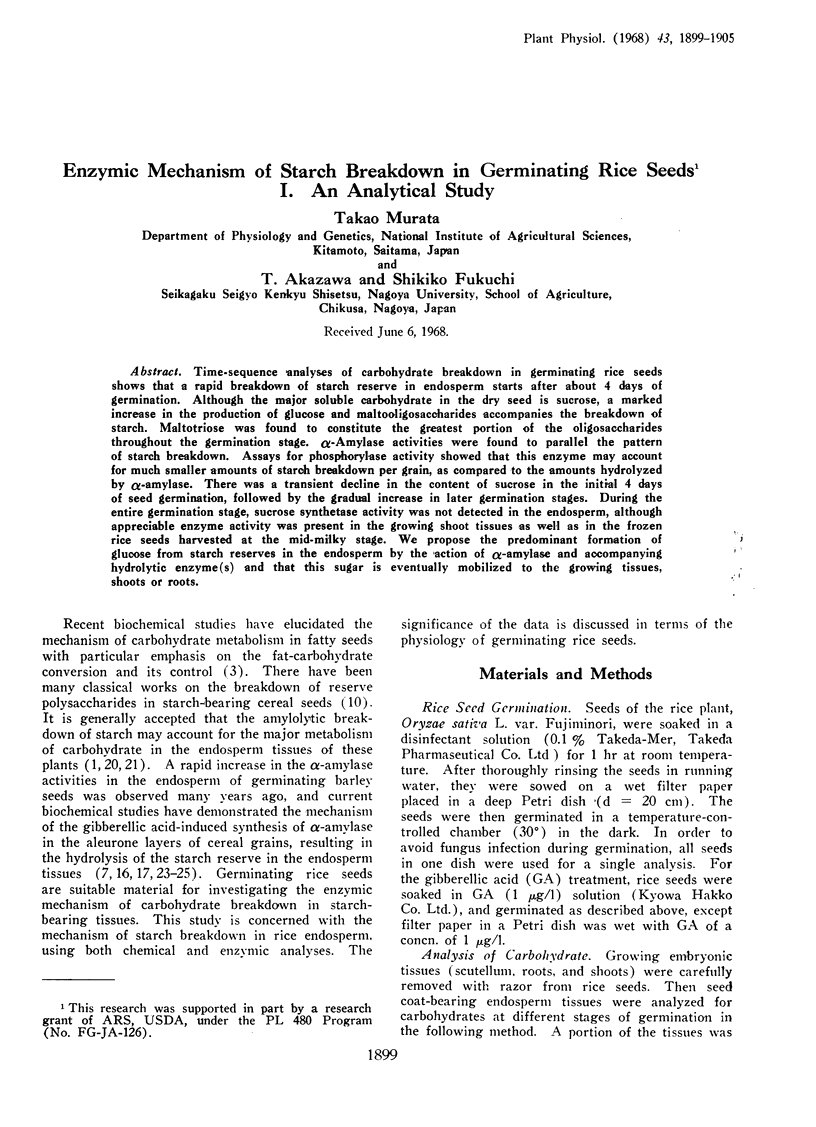
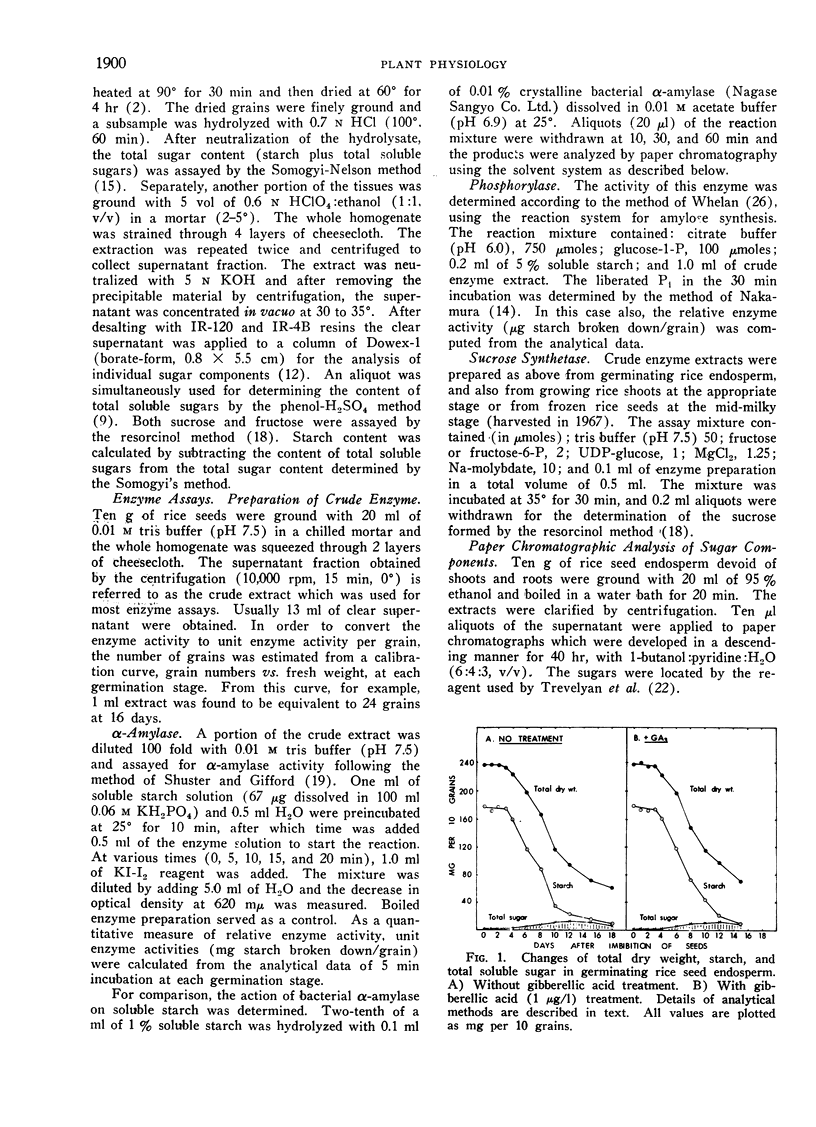
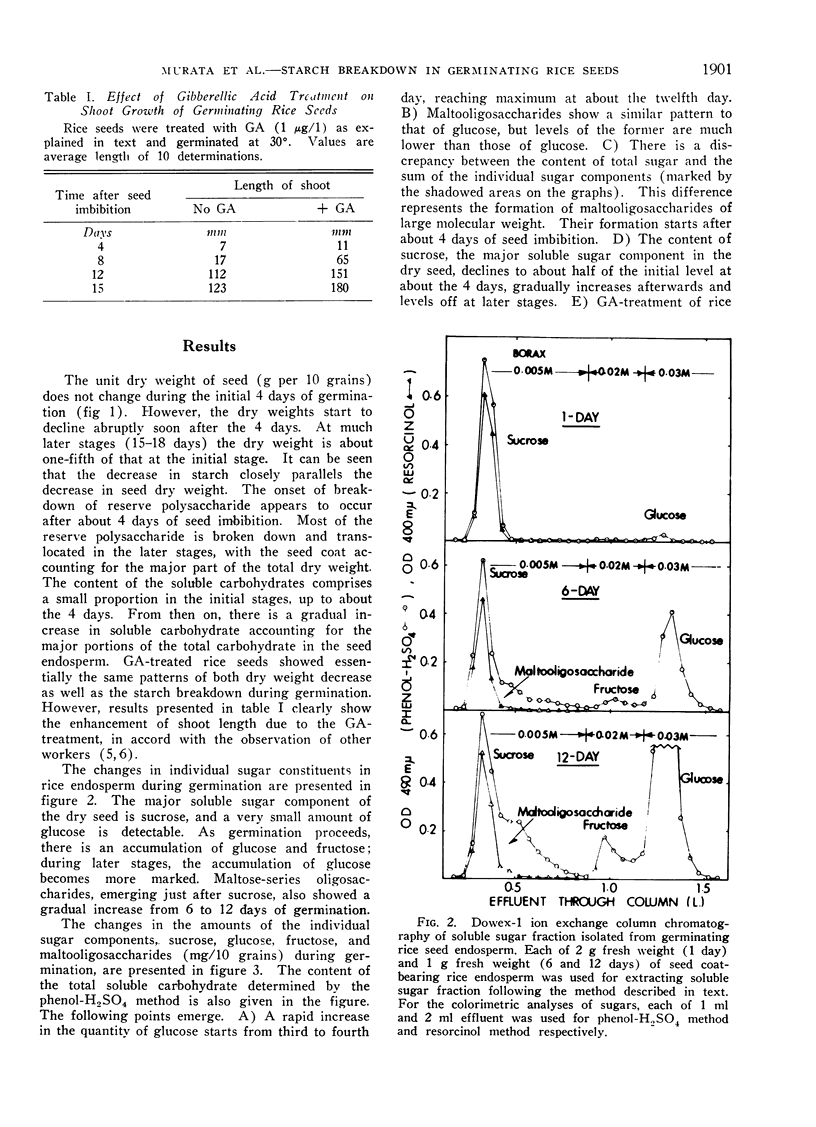
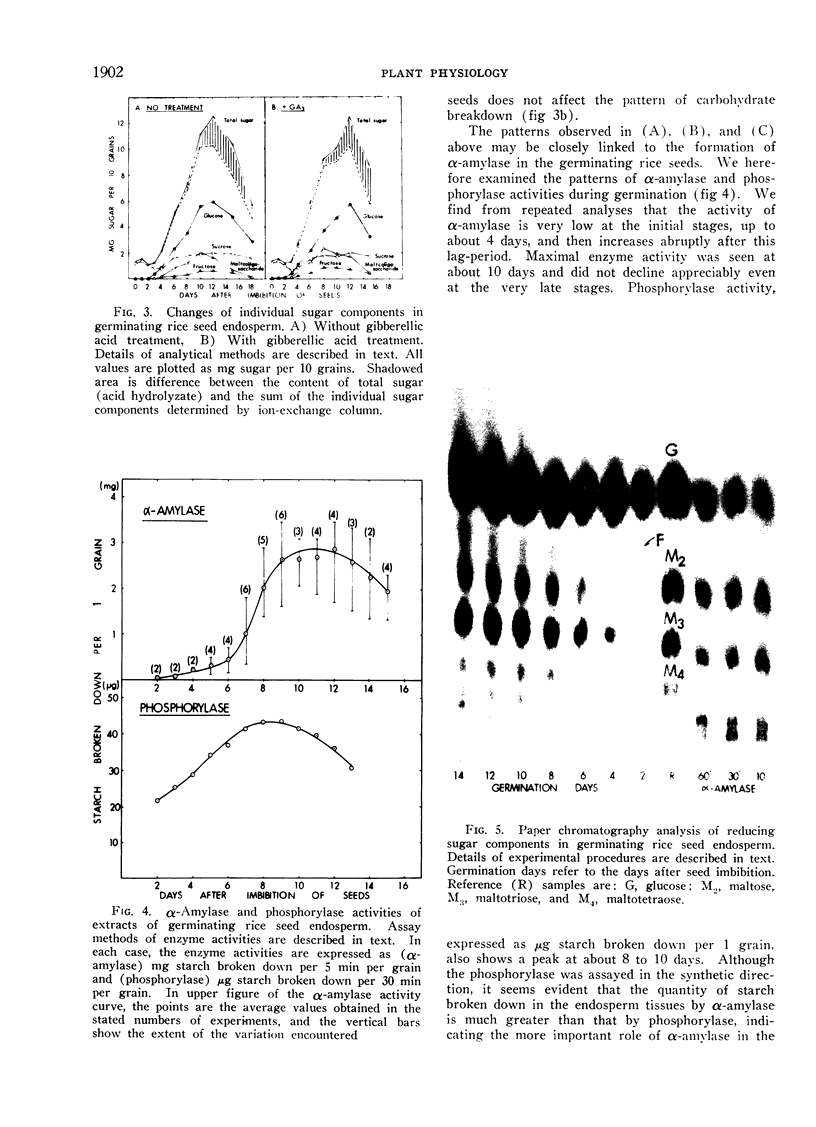
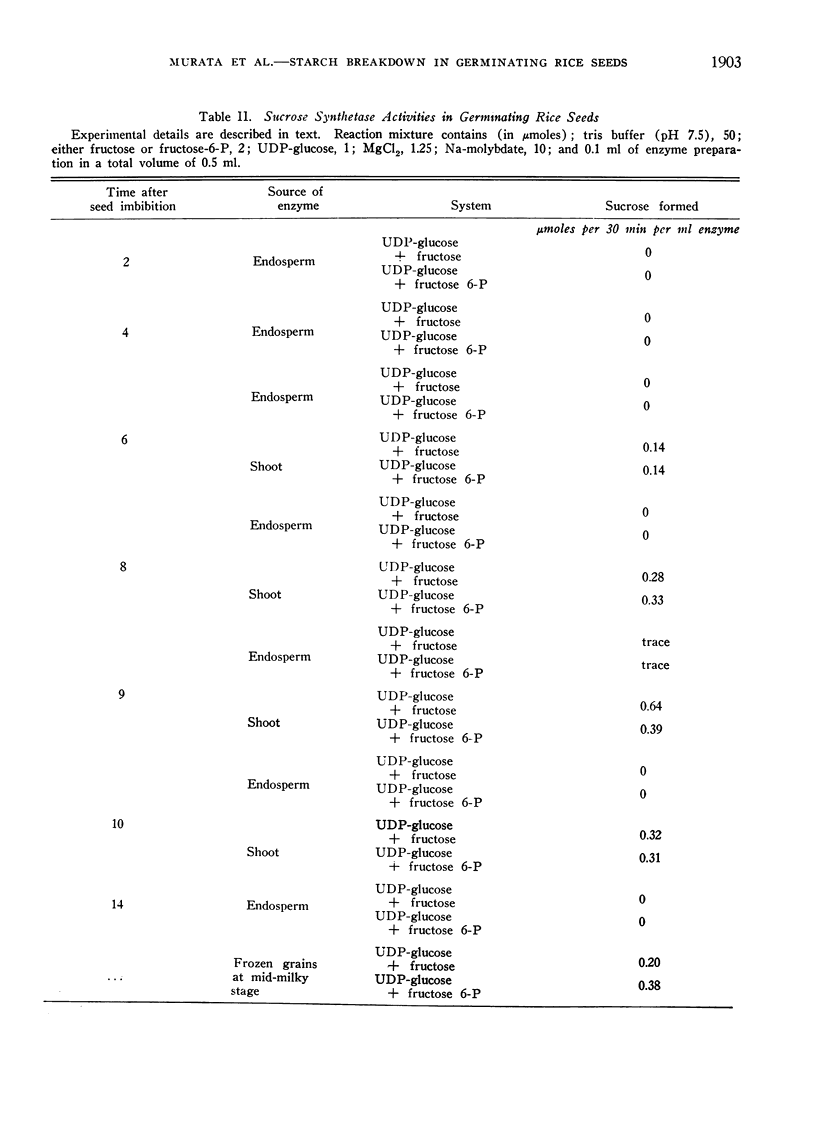
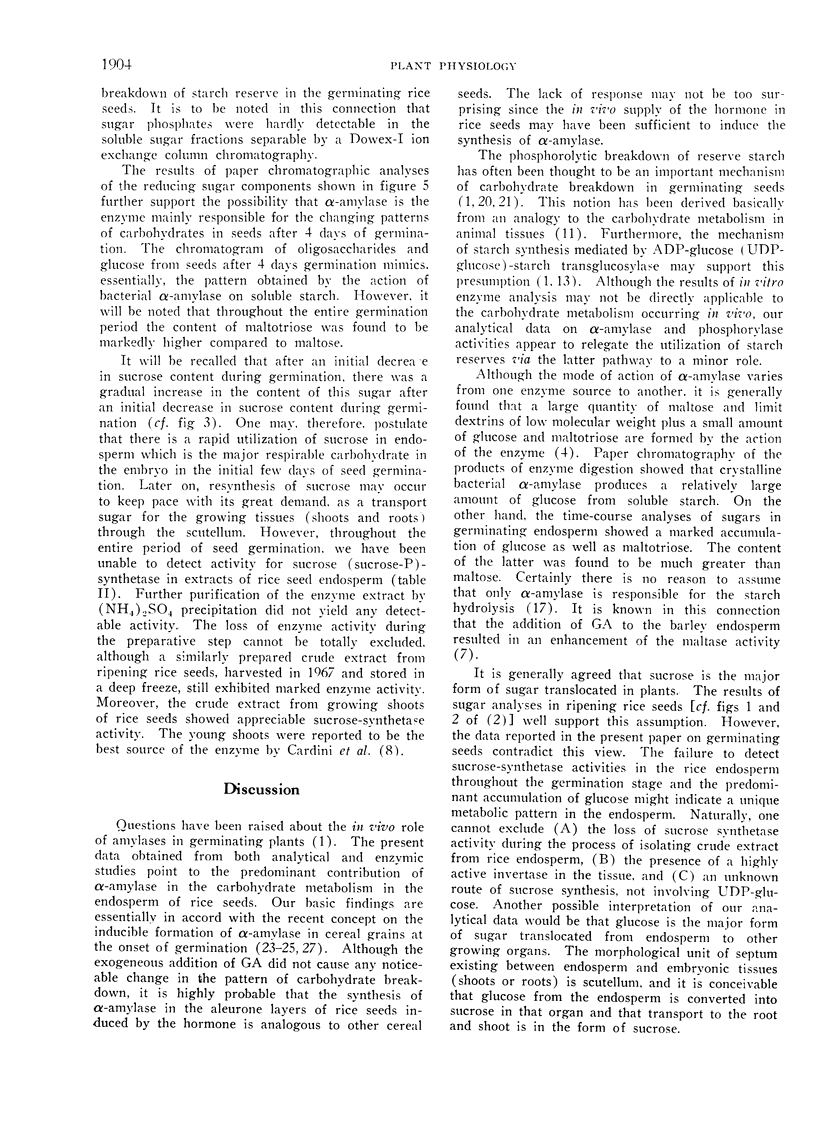
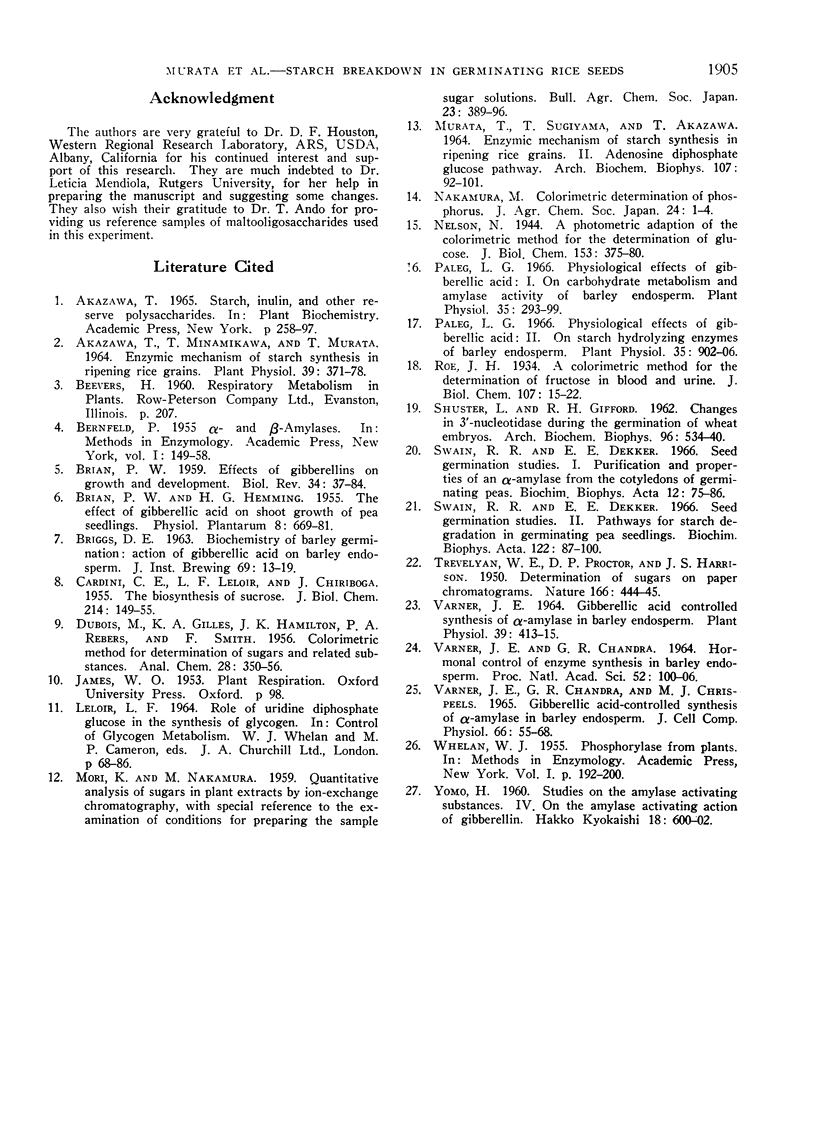
Images in this article
Selected References
These references are in PubMed. This may not be the complete list of references from this article.
- Akazawa T., Minamikawa T., Murata T. Enzymic Mechanism of Starch Synthesis in Ripening Rice Grains. Plant Physiol. 1964 May;39(3):371–378. doi: 10.1104/pp.39.3.371. [DOI] [PMC free article] [PubMed] [Google Scholar]
- CARDINI C. E., LELOIR L. F., CHIRIBOGA J. The biosynthesis of sucrose. J Biol Chem. 1955 May;214(1):149–155. [PubMed] [Google Scholar]
- MURATA T., SUGIYAMA T., AKAZAWA T. ENZYMIC MECHANISM OF STARCH SYNTHESIS IN RIPENING RICE GRAINS. II. ADENOSINE DIPHOSPHATE GLUCOSE PATHWAY. Arch Biochem Biophys. 1964 Jul;107:92–101. doi: 10.1016/0003-9861(64)90274-7. [DOI] [PubMed] [Google Scholar]
- Paleg L. G. Physiological Effects of Gibberellic Acid. II. On Starch Hydrolyzing Enzymes of Barley Endosperm. Plant Physiol. 1960 Nov;35(6):902–906. doi: 10.1104/pp.35.6.902. [DOI] [PMC free article] [PubMed] [Google Scholar]
- Paleg L. G. Physiological Effects of Gibberellic Acid: I. On Carbohydrate Metabolism and Amylase Activity of Barley Endosperm. Plant Physiol. 1960 May;35(3):293–299. doi: 10.1104/pp.35.3.293. [DOI] [PMC free article] [PubMed] [Google Scholar]
- SHUSTER L., GIFFORD R. H. Changes in 3'-nucleotidase during the germination of wheatembryos. Arch Biochem Biophys. 1962 Mar;96:534–540. doi: 10.1016/0003-9861(62)90332-6. [DOI] [PubMed] [Google Scholar]
- Swain R. R., Dekker E. E. Seed germination studies. I. Purification and properties of an alpha-amylase from the cotyledons of germinating peas. Biochim Biophys Acta. 1966 Jul 6;122(1):75–86. doi: 10.1016/0926-6593(66)90092-0. [DOI] [PubMed] [Google Scholar]
- Swain R. R., Dekker E. E. Seed germination studies. II. Pathways for starch degradation in germinating pea seedlings. Biochim Biophys Acta. 1966 Jul 6;122(1):87–100. doi: 10.1016/0926-6593(66)90093-2. [DOI] [PubMed] [Google Scholar]
- Varner J. E., Chandra G. R. HORMONAL CONTROL OF ENZYME SYNTHESIS IN BARLEY ENDOSPERM. Proc Natl Acad Sci U S A. 1964 Jul;52(1):100–106. doi: 10.1073/pnas.52.1.100. [DOI] [PMC free article] [PubMed] [Google Scholar]
- Varner J. E. Gibberellic Acid Controlled Synthesis of alpha-Amylase in Barley Endosperm. Plant Physiol. 1964 May;39(3):413–415. doi: 10.1104/pp.39.3.413. [DOI] [PMC free article] [PubMed] [Google Scholar]



